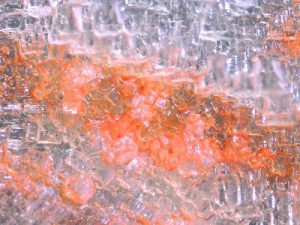All domains of life share a cell division strategy

Researchers have found that these pink-hued archaea — called Halobacterium salinarum — use the same mechanisms to maintain size as bacteria and eukaryotic life, indicating that cellular division strategy may be shared across all domains of life. (Image courtesy of Alexandre Bison/Harvard University)
Scientists from Harvard University have shown that the three domains of life – archaea, bacteria and eukarya – all use the same mechanism to ensure cells within a population maintain a uniform size. The research, recently published in Nature Microbiology, provides new insight into the evolution of cell cycle control.
Previously, the researchers had demonstrated that E. coli (bacteria) and budding yeast (eukaryote) utilize the same mechanisms to maintain a consistent cell size. In the new paper, they found that archaea employ the same mechanism.
Archaea are single-celled microorganisms that lack a cell nucleus or any other membrane-bound organelles. Only recognized as a major domain of life since the 1970s, archaea are relatively understudied due to the difficulty of cultivating them in a lab. They live in a variety of extreme environments, such as volcanic hot springs, oil wells and salt lakes. Though they resemble bacteria in size and shape, their cell cycle events (such as cell division and DNA replication) tend to be a hybrid between bacteria and eukaryotes.
In the new paper, the research team looked at Halobacterium salinarum, an extremophile that lives in very salty environments. They found that H. salinarum – like bacteria and budding yeast – control their size by adding a constant volume between two events in the cell cycle. However, the H. salinarum were less precise than E. coli, introducing more variation into their cell division and growth.
“This research is the first to quantify the cellular mechanics of size regulation in archaea,” senior author Ariel Amir said in a press release. “This allows us to quantitatively explore how these mechanisms work, and build a model that explains the variability within the data and the correlations between key properties of the cell cycle. Eventually, we hope to understand just what makes this cellular mechanism so popular across all domains of life.”
Do you work in this area of research? Kerafast offers a variety of research reagents for studying microbiology and the cell cycle, direct from academic laboratories worldwide.


